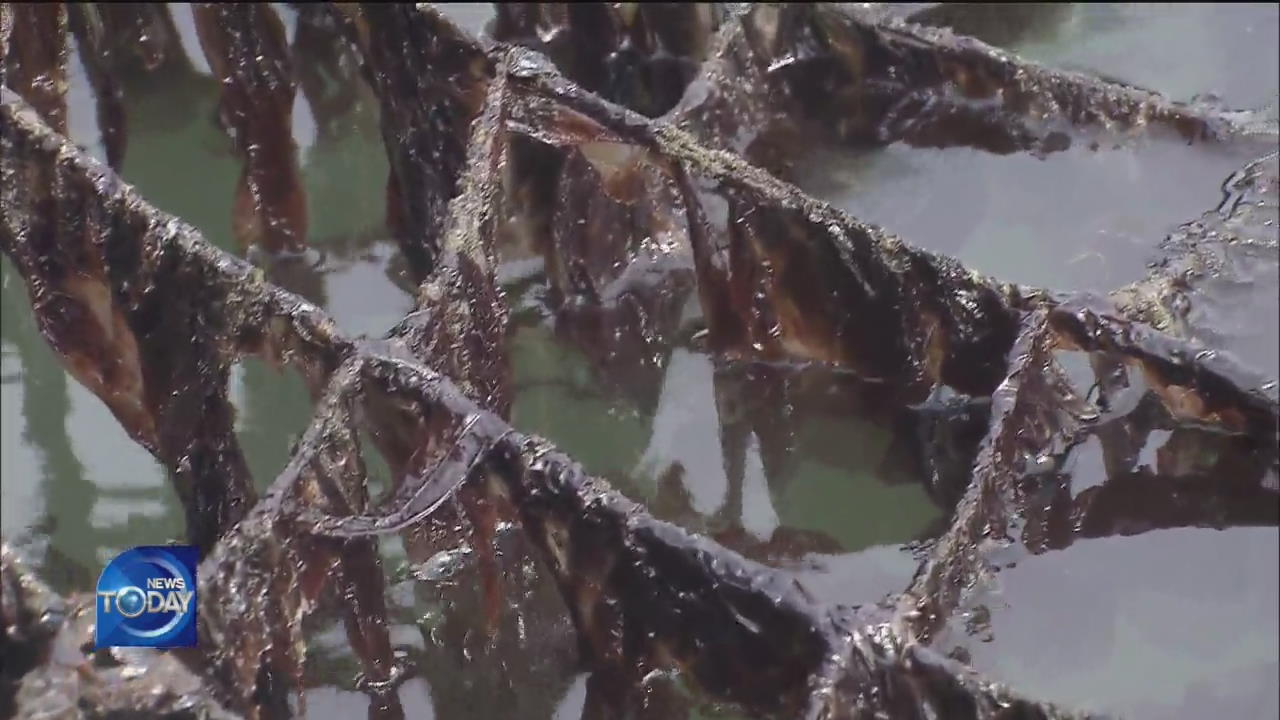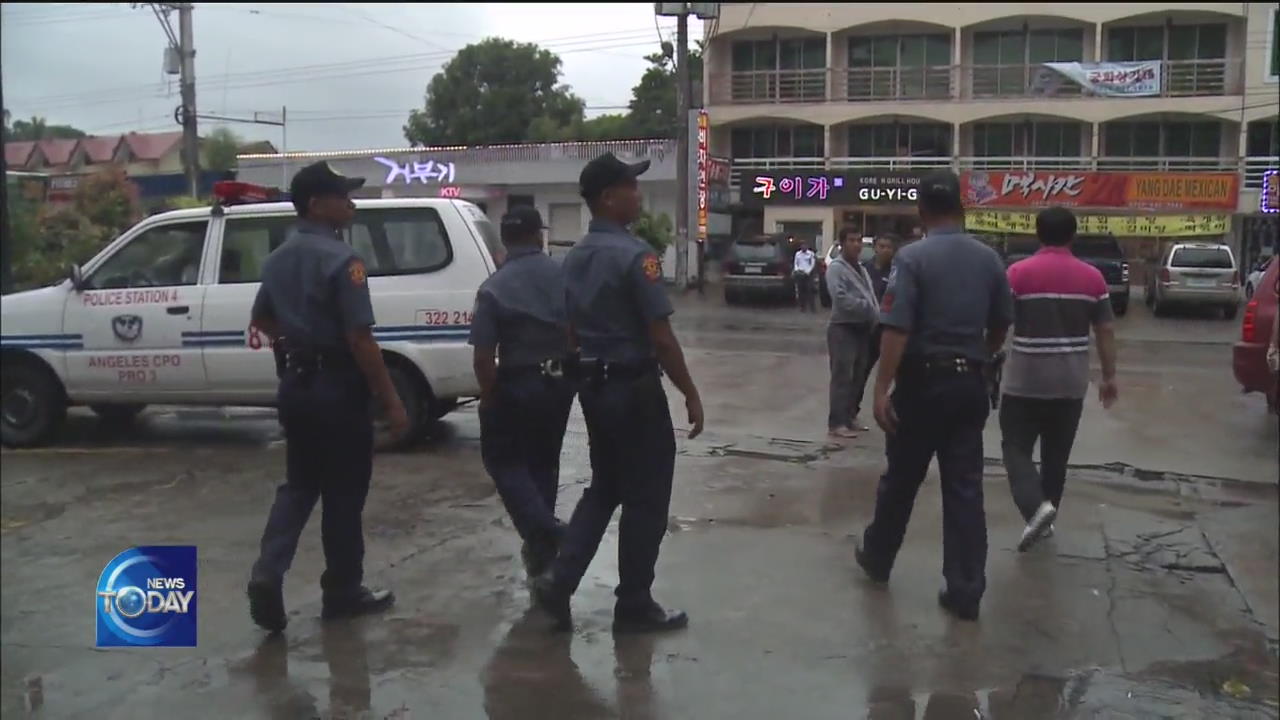WARM WINTER IMPACTS LAVER PRODUCTION
입력 2020.02.10 (15:09)
수정 2020.02.10 (16:45)
읽어주기 기능은 크롬기반의
브라우저에서만 사용하실 수 있습니다.
[Anchor Lead]
This winter's unseasonably mild weather is having negative impacts on the production of laver, a key sea food of the cold season. The seaweed's production has plunged in Seocheon, Chungcheongnam-do Province, which is the largest laver producer on the nation's west coast.
[Pkg]
The quiet, vast sea is dotted with laver farms. A closer look reveals that there are empty spaces around the laver beds.
[Soundbite] KIM EUI-SEONG(LAVER FARMER) : "Net knots should be invisible. No visible knots suggest a good harvest of laver. Empty spaces mean a bad year."
The beds are pulled up to show that the sea weed is long enough to be harvested but its not ripe enough. The harvest of laver has dwindled this year. Seocheon has produced 19,000 tons of wet laver this winter, down 20 percent from the same period last year. The drop is mostly attributed to warmer water. A cold environment is ideal for the growth of laver. Since September, when laver seedlings began to be collected, the water temperature in Seocheon has been up to 1.5 degrees higher than in previous years. The seedlings were not ripe enough and their leaves were broken off by strong winds, leading to a fall in production.
[Soundbite] KIM MYUNG-GYU(SEOCHEON SEOBU FISHERIES COOPERATIVE) : "The temperature should be right when seeds are planted. But the higher temperature prevented the implantation and growth of seeds, making the sea weed slip away from beds."
With the decreased production, the auction price of a sack of 120 kilograms of wet laver in Seocheon has jumped 10,000 won. The harvest of laver usually continues until mid-April. Laver farmers are concerned the harvest period could be shortened by nearly a month if the water temperature remains high.
This winter's unseasonably mild weather is having negative impacts on the production of laver, a key sea food of the cold season. The seaweed's production has plunged in Seocheon, Chungcheongnam-do Province, which is the largest laver producer on the nation's west coast.
[Pkg]
The quiet, vast sea is dotted with laver farms. A closer look reveals that there are empty spaces around the laver beds.
[Soundbite] KIM EUI-SEONG(LAVER FARMER) : "Net knots should be invisible. No visible knots suggest a good harvest of laver. Empty spaces mean a bad year."
The beds are pulled up to show that the sea weed is long enough to be harvested but its not ripe enough. The harvest of laver has dwindled this year. Seocheon has produced 19,000 tons of wet laver this winter, down 20 percent from the same period last year. The drop is mostly attributed to warmer water. A cold environment is ideal for the growth of laver. Since September, when laver seedlings began to be collected, the water temperature in Seocheon has been up to 1.5 degrees higher than in previous years. The seedlings were not ripe enough and their leaves were broken off by strong winds, leading to a fall in production.
[Soundbite] KIM MYUNG-GYU(SEOCHEON SEOBU FISHERIES COOPERATIVE) : "The temperature should be right when seeds are planted. But the higher temperature prevented the implantation and growth of seeds, making the sea weed slip away from beds."
With the decreased production, the auction price of a sack of 120 kilograms of wet laver in Seocheon has jumped 10,000 won. The harvest of laver usually continues until mid-April. Laver farmers are concerned the harvest period could be shortened by nearly a month if the water temperature remains high.
■ 제보하기
▷ 카카오톡 : 'KBS제보' 검색, 채널 추가
▷ 전화 : 02-781-1234, 4444
▷ 이메일 : kbs1234@kbs.co.kr
▷ 유튜브, 네이버, 카카오에서도 KBS뉴스를 구독해주세요!
- WARM WINTER IMPACTS LAVER PRODUCTION
-
- 입력 2020-02-10 15:07:09
- 수정2020-02-10 16:45:45

[Anchor Lead]
This winter's unseasonably mild weather is having negative impacts on the production of laver, a key sea food of the cold season. The seaweed's production has plunged in Seocheon, Chungcheongnam-do Province, which is the largest laver producer on the nation's west coast.
[Pkg]
The quiet, vast sea is dotted with laver farms. A closer look reveals that there are empty spaces around the laver beds.
[Soundbite] KIM EUI-SEONG(LAVER FARMER) : "Net knots should be invisible. No visible knots suggest a good harvest of laver. Empty spaces mean a bad year."
The beds are pulled up to show that the sea weed is long enough to be harvested but its not ripe enough. The harvest of laver has dwindled this year. Seocheon has produced 19,000 tons of wet laver this winter, down 20 percent from the same period last year. The drop is mostly attributed to warmer water. A cold environment is ideal for the growth of laver. Since September, when laver seedlings began to be collected, the water temperature in Seocheon has been up to 1.5 degrees higher than in previous years. The seedlings were not ripe enough and their leaves were broken off by strong winds, leading to a fall in production.
[Soundbite] KIM MYUNG-GYU(SEOCHEON SEOBU FISHERIES COOPERATIVE) : "The temperature should be right when seeds are planted. But the higher temperature prevented the implantation and growth of seeds, making the sea weed slip away from beds."
With the decreased production, the auction price of a sack of 120 kilograms of wet laver in Seocheon has jumped 10,000 won. The harvest of laver usually continues until mid-April. Laver farmers are concerned the harvest period could be shortened by nearly a month if the water temperature remains high.
This winter's unseasonably mild weather is having negative impacts on the production of laver, a key sea food of the cold season. The seaweed's production has plunged in Seocheon, Chungcheongnam-do Province, which is the largest laver producer on the nation's west coast.
[Pkg]
The quiet, vast sea is dotted with laver farms. A closer look reveals that there are empty spaces around the laver beds.
[Soundbite] KIM EUI-SEONG(LAVER FARMER) : "Net knots should be invisible. No visible knots suggest a good harvest of laver. Empty spaces mean a bad year."
The beds are pulled up to show that the sea weed is long enough to be harvested but its not ripe enough. The harvest of laver has dwindled this year. Seocheon has produced 19,000 tons of wet laver this winter, down 20 percent from the same period last year. The drop is mostly attributed to warmer water. A cold environment is ideal for the growth of laver. Since September, when laver seedlings began to be collected, the water temperature in Seocheon has been up to 1.5 degrees higher than in previous years. The seedlings were not ripe enough and their leaves were broken off by strong winds, leading to a fall in production.
[Soundbite] KIM MYUNG-GYU(SEOCHEON SEOBU FISHERIES COOPERATIVE) : "The temperature should be right when seeds are planted. But the higher temperature prevented the implantation and growth of seeds, making the sea weed slip away from beds."
With the decreased production, the auction price of a sack of 120 kilograms of wet laver in Seocheon has jumped 10,000 won. The harvest of laver usually continues until mid-April. Laver farmers are concerned the harvest period could be shortened by nearly a month if the water temperature remains high.
이 기사가 좋으셨다면
-
좋아요
0
-
응원해요
0
-
후속 원해요
0













![[단독] 도이치 주포 “김건희, 내 덕에 떼돈 벌어…22억 원 주문”](/data/news/2025/07/03/20250703_KpuU43.png)
![[단독] “쪽지 얼핏 봤다, 안 받았다”더니…CCTV에선 문건 챙긴 이상민](/data/news/2025/07/03/20250703_Lv3LjI.png)


이 기사에 대한 의견을 남겨주세요.